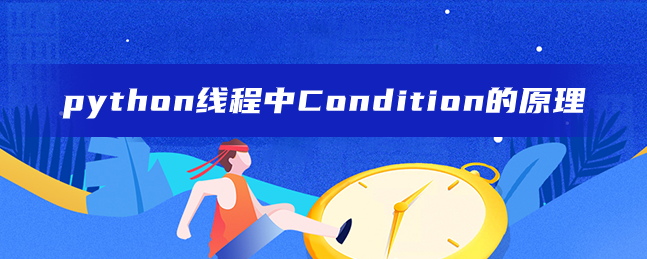
原理分析
1、Python条件变量Condition需要关联互斥锁,同时Condition本身提供了wait、notify、notifyAll方法。
2、用于阻塞、通知其他并行线程,可以访问共享资源。
Condition提供了一种多线程通信机制。如果线程1需要数据,线程1会堵塞等待,然后线程2会制造数据。线程2制造数据后,通知线程1可以获取数据,然后线程1会获取数据。
实例
# !usr/bin/env python
# -*- coding:utf-8 _*-
# 导入线程模块
import threading
# 创建条件变量condition
con = threading.Condition()
def thread_one(name):
# 条件变量condition 线程上锁
con.acquire()
print("{}:成语接龙准备好了吗".format(name))
# 唤醒正在等待(wait)的线程
con.notify()
# 等待对方回应消息,使用wait阻塞线程,等待对方通过notify唤醒本线程
con.wait()
print("{}:一干二净".format(name))
# 唤醒对方
con.notify()
# 等待消息答应
con.wait()
print("{}:一天就知道看抖音美女,给你来个简单点的,来了:毛手毛脚".format(name))
# 唤醒对方
con.notify()
# 等待消息答应
con.wait()
print("{}:哟哟哟,不错不错!".format(name))
# 唤醒对方
con.notify()
# 条件变量condition 线程释放锁
con.release()
def thread_two(name):
# 条件变量condition 线程上锁
con.acquire()
# wait阻塞状态,等待其他线程通过notify唤醒本线程
con.wait()
print("{}:准备好了~开始吧!".format(name))
# 唤醒对方
con.notify()
# 等待消息答应
con.wait()
print("{}:净你妹啊,没法接...来个简单点的...".format(name))
# 唤醒对方
con.notify()
# 等待消息答应
con.wait()
print("{}:嘿,这个我知道:脚踏实地".format(name))
# 唤醒对方
con.notify()
con.release()
if __name__ == "__main__":
# 创建并初始化线程
t1 = threading.Thread(target=thread_one,args=("A"))
t2 = threading.Thread(target=thread_two,args=("B"))
# 启动线程 -- 注意线程启动顺序,启动顺序很重要
t2.start()
t1.start()
# 阻塞主线程,等待子线程结束
t1.join()
t2.join()
print("程序结束!")
'''
输出结果:
A:成语接龙准备好了吗
B:准备好了~开始吧!
A:一干二净
B:净你妹啊,没法接...来个简单点的...
A:一天就知道看抖音美女,给你来个简单点的,来了:毛手毛脚
B:嘿,这个我知道:脚踏实地
A:哟哟哟,不错不错!
程序结束!
'''以上就是python线程中Condition的原理,希望对大家有所帮助。更多Python学习指路:python基础教程
本文教程操作环境:windows7系统、Python 3.9.1,DELL G3电脑。






